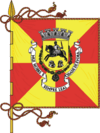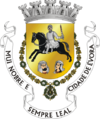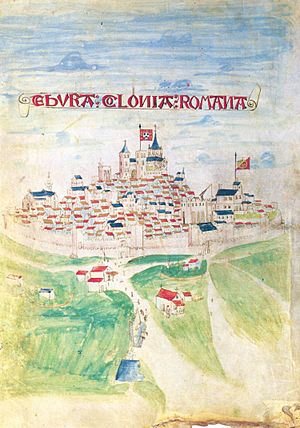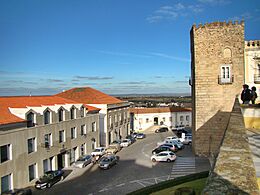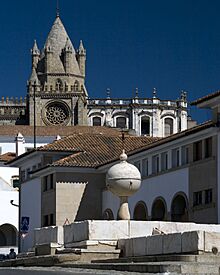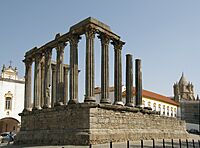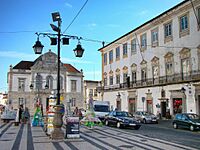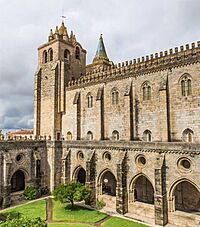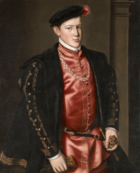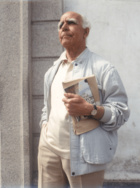Évora facts for kids
Quick facts for kids
Évora
|
|||
|---|---|---|---|
|
Municipality
|
|||
|
Top: Évora Cathedral; Roman Temple of Évora; Graça Church; middle: Giraldo Square; bottom: Royal Palace of Évora gardens; University of Évora; Rua do Cano.
|
|||
|
|||
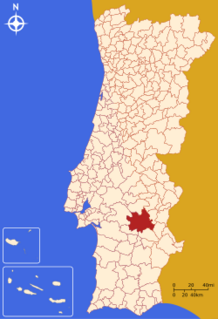 |
|||
| Country | |||
| Region | Alentejo | ||
| Intermunic. comm. | Alentejo Central | ||
| District | Évora | ||
| Parishes | 12 | ||
| Area | |||
| • Total | 1,307.08 km2 (504.67 sq mi) | ||
| Population
(2021)
|
|||
| • Total | 53,591 | ||
| • Density | 41.0006/km2 (106.1909/sq mi) | ||
| Time zone | WET/WEST (UTC+0/+1) | ||
| Local holiday | Saint Peter 29 June |
||
| Website | |||
| UNESCO World Heritage Site | |||
| Official name | Historic Centre of Évora | ||
| Criteria | ii, iv | ||
| Inscription | 1986 (10th Session) | ||
Évora is a city and a municipality in Portugal. It has about 53,591 people living there (as of 2021). The city covers an area of about 1,307 square kilometers (505 square miles). Évora is the historic capital of the Alentejo region and is the main city of the Évora District.
Évora is famous for its old town center, which is very well-preserved. Parts of it are still surrounded by medieval walls. It has many old buildings and monuments from different times in history, including a Roman Temple. Because of its rich history and beautiful buildings, Évora is a UNESCO World Heritage Site. This means it's a very special place that the world wants to protect.
Because Évora is located inland, it can get very hot in the summer. It often experiences heatwaves.
Évora is considered one of the best cities to live in Portugal. It ranks high in surveys about living conditions. It was also ranked first for how competitive it is among Portuguese district capitals in a 2006 study.
Évora has been chosen to be the European Capital of Culture in 2027, along with Liepāja, Latvia. This is a big honor!
Contents
History of Évora
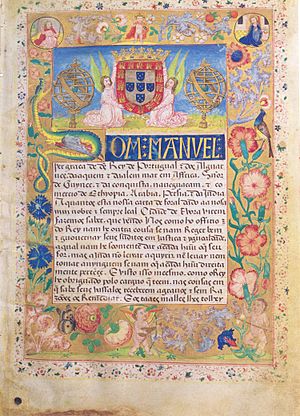
Ancient Beginnings
Évora has a very long history, going back more than 5,000 years!
It was first known as Ebora by the Celtici. These were a group of tribes living south of the Tagus River. They made Évora their main city in the region.
The name Ebora comes from an old Celtic word meaning "of the yew trees." Yew is a type of tree. So, Évora's name means "place of the yew trees." The city of York in England has a similar name origin!
Roman Times
The Romans took over Évora in 57 BC. They made it a walled town. You can still see parts of the old Roman walls and ruins of Roman baths today.
Julius Caesar called the city Liberalitas Julia, meaning "Julian generosity." Évora became very important because many main roads met there. Pliny the Elder, a famous Roman writer, visited Évora. He called it Ebora Cerealis because of its many wheat fields. Évora was a busy and successful city back then. A large Roman temple in the city center was built around the 1st century. It was likely built to honor Emperor Augustus.
Later, in the 4th century, Évora already had its own bishop.
Moorish Influence
In 715, the city was conquered by the Moors. The Moors were people from North Africa. During their rule (715–1165), Évora slowly started to grow again. It became a center for farming and had a strong fortress and a mosque. You can still see the Moorish influence in the old parts of the city today.
Taking Back the City
Évora was taken from the Moors in a surprise attack in September 1165. This was done by a brave leader named Gerald the Fearless. The city then came under the rule of the Portuguese king Afonso I in 1166.
Évora became one of the most active cities in Portugal during the Middle Ages. This was especially true in the 15th century. Portuguese kings often stayed here. They built palaces, monuments, and religious buildings. Many important royal weddings and decisions happened in Évora.
A Golden Age
Évora was especially successful during the Avis Dynasty (1385–1580). This was under the rule of King Manuel I and King John III. Évora became a major center for learning and art. Many famous artists and thinkers lived and worked here.
The city became the seat of an archbishop in 1540. The University of Évora was started by the Jesuits in 1559. Important European teachers shared their knowledge there. However, in the 18th century, the Jesuits were removed from Portugal. The university was closed in 1759. Évora then went through a period of decline. The university finally reopened in 1973.
Recent Times
In 1808, a battle took place in Évora during the Peninsular War. A smaller Portuguese-Spanish army tried to stop French forces but was defeated. The French attacked the city, causing a lot of damage.
In 1834, Évora was where King Miguel I's forces surrendered. This ended the Liberal Wars in Portugal. Today, the many beautiful buildings and monuments in Évora show its rich history and culture. You can see different styles like Romanesque, Gothic, Manueline, Renaissance, and Baroque. The city center has a charming maze of squares and narrow streets.
In 1909, an earthquake caused some damage to the city.
Geography and Climate
Where Évora Is Located
Évora is about 300 meters (984 feet) above sea level. It is in Alentejo, a large region of flat lands in southern Portugal. The city is about 140 kilometers (87 miles) from Lisbon, the capital city. It is also about 80 kilometers (50 miles) from Badajoz on the Spanish border. Évora is the main city in its region.
The city of Évora itself includes the historic center and newer urban areas outside the old walls. Most people live in these newer parts. The historic center has about 4,000 buildings and covers an area of about 1.05 square kilometers (0.41 square miles).
Évora's Climate
Évora has a hot-summer Mediterranean climate. This means it has hot, dry summers and mild, wet winters. Because it's inland in southern Portugal, it often experiences droughts. Évora can get very hot, with record temperatures reaching 45.4°C (113.7°F). However, the average summer high is usually around 30°C (86°F). Winters have frequent but not severe frosts. Snow rarely falls, maybe twice every ten years.
| Climate data for Évora (Nossa Senhora da Saúde), elevation: 309 m or 1,014 ft, 1981-2010 normals, extremes 1981-present | |||||||||||||
|---|---|---|---|---|---|---|---|---|---|---|---|---|---|
| Month | Jan | Feb | Mar | Apr | May | Jun | Jul | Aug | Sep | Oct | Nov | Dec | Year |
| Record high °C (°F) | 24.7 (76.5) |
24.3 (75.7) |
31.3 (88.3) |
35.4 (95.7) |
37.8 (100.0) |
41.8 (107.2) |
44.2 (111.6) |
45.4 (113.7) |
42.6 (108.7) |
36.7 (98.1) |
27.6 (81.7) |
24.4 (75.9) |
45.4 (113.7) |
| Mean daily maximum °C (°F) | 13.4 (56.1) |
14.7 (58.5) |
18.0 (64.4) |
19.1 (66.4) |
22.6 (72.7) |
27.9 (82.2) |
31.1 (88.0) |
31.1 (88.0) |
27.8 (82.0) |
22.2 (72.0) |
17.1 (62.8) |
13.8 (56.8) |
21.6 (70.8) |
| Daily mean °C (°F) | 9.6 (49.3) |
10.7 (51.3) |
13.3 (55.9) |
14.3 (57.7) |
17.1 (62.8) |
21.4 (70.5) |
23.9 (75.0) |
24.1 (75.4) |
21.9 (71.4) |
17.7 (63.9) |
13.4 (56.1) |
10.5 (50.9) |
16.5 (61.7) |
| Mean daily minimum °C (°F) | 5.8 (42.4) |
6.7 (44.1) |
8.6 (47.5) |
9.5 (49.1) |
11.7 (53.1) |
14.8 (58.6) |
16.6 (61.9) |
17.0 (62.6) |
16.0 (60.8) |
13.2 (55.8) |
9.7 (49.5) |
7.1 (44.8) |
11.4 (52.5) |
| Record low °C (°F) | −2.9 (26.8) |
−1.4 (29.5) |
−2.3 (27.9) |
2.9 (37.2) |
4.9 (40.8) |
6.7 (44.1) |
10.9 (51.6) |
11.4 (52.5) |
9.1 (48.4) |
5.5 (41.9) |
0.0 (32.0) |
−0.5 (31.1) |
−2.9 (26.8) |
| Average precipitation mm (inches) | 60.7 (2.39) |
51.9 (2.04) |
43.9 (1.73) |
55.0 (2.17) |
46.5 (1.83) |
16.5 (0.65) |
4.1 (0.16) |
8.2 (0.32) |
32.2 (1.27) |
83.6 (3.29) |
87.6 (3.45) |
95.1 (3.74) |
585.3 (23.04) |
| Source: IPMA | |||||||||||||
| Climate data for Évora (Nossa Senhora da Saúde), elevation: 321 m or 1,053 ft, 1961-1990 normals and extremes | |||||||||||||
|---|---|---|---|---|---|---|---|---|---|---|---|---|---|
| Month | Jan | Feb | Mar | Apr | May | Jun | Jul | Aug | Sep | Oct | Nov | Dec | Year |
| Record high °C (°F) | 21.0 (69.8) |
24.2 (75.6) |
26.0 (78.8) |
29.6 (85.3) |
34.2 (93.6) |
41.0 (105.8) |
40.6 (105.1) |
39.5 (103.1) |
39.7 (103.5) |
32.4 (90.3) |
28.4 (83.1) |
21.5 (70.7) |
41.0 (105.8) |
| Mean daily maximum °C (°F) | 12.8 (55.0) |
13.7 (56.7) |
15.9 (60.6) |
17.8 (64.0) |
21.6 (70.9) |
26.2 (79.2) |
30.0 (86.0) |
30.2 (86.4) |
27.4 (81.3) |
21.7 (71.1) |
16.3 (61.3) |
13.1 (55.6) |
20.6 (69.0) |
| Daily mean °C (°F) | 9.4 (48.9) |
10.2 (50.4) |
11.8 (53.2) |
13.4 (56.1) |
16.3 (61.3) |
20.1 (68.2) |
23.0 (73.4) |
23.2 (73.8) |
21.6 (70.9) |
17.3 (63.1) |
12.7 (54.9) |
9.9 (49.8) |
15.7 (60.3) |
| Mean daily minimum °C (°F) | 6.1 (43.0) |
6.7 (44.1) |
7.7 (45.9) |
8.9 (48.0) |
11.1 (52.0) |
14.0 (57.2) |
16.0 (60.8) |
16.3 (61.3) |
15.7 (60.3) |
12.9 (55.2) |
9.1 (48.4) |
6.6 (43.9) |
10.9 (51.7) |
| Record low °C (°F) | −2.9 (26.8) |
−2.1 (28.2) |
−0.8 (30.6) |
2.0 (35.6) |
4.9 (40.8) |
6.7 (44.1) |
9.8 (49.6) |
11.0 (51.8) |
7.6 (45.7) |
4.0 (39.2) |
0.6 (33.1) |
−2.9 (26.8) |
−2.9 (26.8) |
| Average precipitation mm (inches) | 88 (3.5) |
86 (3.4) |
57 (2.2) |
56 (2.2) |
38 (1.5) |
29 (1.1) |
8 (0.3) |
4 (0.2) |
27 (1.1) |
69 (2.7) |
80 (3.1) |
85 (3.3) |
627 (24.6) |
| Average precipitation days (≥ 1.0 mm) | 10 | 10 | 7 | 8 | 6 | 3 | 1 | trace | 3 | 7 | 9 | 9 | 73 |
| Average relative humidity (%) | 79 | 77 | 70 | 67 | 63 | 58 | 52 | 51 | 56 | 67 | 75 | 79 | 66 |
| Mean monthly sunshine hours | 148 | 148 | 203 | 220 | 285 | 301 | 363 | 346 | 251 | 204 | 158 | 144 | 2,771 |
| Source: NOAA | |||||||||||||
| Climate data for Évora (Mitra), 1941-1990, altitude: 200 m (660 ft) | |||||||||||||
|---|---|---|---|---|---|---|---|---|---|---|---|---|---|
| Month | Jan | Feb | Mar | Apr | May | Jun | Jul | Aug | Sep | Oct | Nov | Dec | Year |
| Mean daily maximum °C (°F) | 13.5 (56.3) |
14.7 (58.5) |
17.3 (63.1) |
19.5 (67.1) |
23.2 (73.8) |
28.1 (82.6) |
32.0 (89.6) |
31.8 (89.2) |
28.5 (83.3) |
23.1 (73.6) |
17.5 (63.5) |
14.2 (57.6) |
22.0 (71.5) |
| Daily mean °C (°F) | 8.5 (47.3) |
9.7 (49.5) |
11.7 (53.1) |
13.6 (56.5) |
16.6 (61.9) |
20.5 (68.9) |
23.3 (73.9) |
23.3 (73.9) |
20.9 (69.6) |
16.8 (62.2) |
12.3 (54.1) |
9.3 (48.7) |
15.5 (60.0) |
| Mean daily minimum °C (°F) | 3.4 (38.1) |
4.6 (40.3) |
6.0 (42.8) |
7.6 (45.7) |
9.9 (49.8) |
12.8 (55.0) |
14.6 (58.3) |
14.7 (58.5) |
13.3 (55.9) |
10.5 (50.9) |
7.0 (44.6) |
4.3 (39.7) |
9.1 (48.3) |
| Average rainy days (≥ 0.1 mm) | 10.3 | 10.0 | 10.0 | 9.2 | 6.5 | 3.4 | 0.7 | 0.8 | 3.4 | 7.2 | 8.6 | 9.3 | 79.4 |
| Source: Instituto de Meteorologia | |||||||||||||
| Climate data for Évora (Currais), 1941-1990, altitude: 230 m (750 ft) | |||||||||||||
|---|---|---|---|---|---|---|---|---|---|---|---|---|---|
| Month | Jan | Feb | Mar | Apr | May | Jun | Jul | Aug | Sep | Oct | Nov | Dec | Year |
| Mean daily maximum °C (°F) | 13.5 (56.3) |
14.7 (58.5) |
17.3 (63.1) |
19.8 (67.6) |
23.6 (74.5) |
28.8 (83.8) |
32.6 (90.7) |
32.3 (90.1) |
29.2 (84.6) |
23.3 (73.9) |
17.7 (63.9) |
14.1 (57.4) |
22.2 (72.0) |
| Daily mean °C (°F) | 8.6 (47.5) |
9.5 (49.1) |
11.5 (52.7) |
13.5 (56.3) |
16.5 (61.7) |
20.8 (69.4) |
23.6 (74.5) |
23.4 (74.1) |
21.4 (70.5) |
17.1 (62.8) |
12.4 (54.3) |
9.2 (48.6) |
15.6 (60.1) |
| Mean daily minimum °C (°F) | 3.6 (38.5) |
4.3 (39.7) |
5.7 (42.3) |
7.2 (45.0) |
9.4 (48.9) |
12.7 (54.9) |
14.5 (58.1) |
14.4 (57.9) |
13.5 (56.3) |
10.9 (51.6) |
7.1 (44.8) |
4.3 (39.7) |
9.0 (48.1) |
| Average rainfall mm (inches) | 79.2 (3.12) |
67.2 (2.65) |
65.3 (2.57) |
49.2 (1.94) |
39.8 (1.57) |
20.2 (0.80) |
4.3 (0.17) |
3.9 (0.15) |
22.4 (0.88) |
57.4 (2.26) |
70.8 (2.79) |
79.9 (3.15) |
559.6 (22.05) |
| Average rainy days (≥ 0.1 mm) | 13.5 | 11.9 | 11.2 | 9.1 | 6.9 | 3.8 | 0.8 | 0.7 | 3.4 | 8.1 | 10.3 | 12.7 | 92.4 |
| Source: Instituto de Meteorologia | |||||||||||||
City Life and Administration
Évora is a nice medium-sized city with many historical sites. These monuments and buildings are a big draw for visitors. The city also hosts many "Festas Populares" (popular festivals) to celebrate saints and holidays. There are also "Feiras" (fairs) and cultural events.
The current Mayor of Évora is Carlos Pinto de Sá. The city celebrates its municipal holiday on June 29th.
The municipality of Évora is divided into 12 smaller areas called civil parishes:
- Bacelo e Senhora da Saúde
- Canaviais
- Évora (São Mamede, Sé, São Pedro e Santo Antão)
- Malagueira e Horta das Figueiras
- Nossa Senhora da Graça do Divor
- Nossa Senhora da Tourega e Nossa Senhora de Guadalupe
- Nossa Senhora de Machede
- São Bento do Mato
- São Manços e São Vicente do Pigeiro
- São Miguel de Machede
- São Sebastião da Giesteira e Nossa Senhora da Boa Fé
- Torre de Coelheiros
International Connections
Évora has special partnerships with other cities around the world. These are called twin towns or sister cities.
 Angra do Heroísmo, Portugal (since 1986)
Angra do Heroísmo, Portugal (since 1986) Chartres, France (since 2003)
Chartres, France (since 2003) Qazvin, Iran (since 2016)
Qazvin, Iran (since 2016) Island of Mozambique, Mozambique (since 1997)
Island of Mozambique, Mozambique (since 1997) Suzdal, Russia (since 1986)
Suzdal, Russia (since 1986)
Évora's Economy
Évora is the main city in the Alentejo region. It is an important center for farming and services. The city has several important places for the region. These include the state-run University of Évora and the local hospital.
In 2015, a company called Embraer built two factories in Évora. They made parts for airplanes there. These factories were later sold to another aerospace company called Aernnova in 2022.
Because Évora has so much history and culture, it has become very popular for international tourism. In the 2010s, more and more people visited the city. This led to many new hotels and places to stay. Some of the most visited sites are the Roman Temple of Évora, the Chapel of Bones, the Cathedral of Évora, Évora's Museum, and its historic center.
Getting Around Évora
You can reach Évora by bus or train. Its train station is the end of the Linha de Évora line. A new train line is being built to Elvas. This line will mostly carry goods, but also some passenger trains.
Évora has a small airport called the Évora Municipal Airport. It does not have commercial flights right now. The closest larger airports are in Beja, Lisbon, Faro, and Badajoz.
Amazing Architecture
| UNESCO World Heritage Site | |
|---|---|
 |
|
| Criteria | Cultural: (ii)(iv) |
| Inscription | 1986 (10th Session) |
Ancient Structures
- Anta Grande do Zambujeiro: This is a large dolmen (an ancient stone tomb). It's about 10 kilometers (6 miles) from Évora.
- Cromeleque dos Almendres: This is a Megalithic monument, like a stone circle. It's about 15 kilometers (9 miles) from Évora. It's interesting for how it lines up with the stars.
City Buildings
The city of Évora is famous for its historic square, the Praça do Geraldo. King Duarte built the Estaus Palace here. The square has a fountain from 1570 with eight jets. These jets represent the eight streets that lead to the square. The Church of Saint Andrew is at the north end of the square. It was built in the 16th century.
- Fountain of Portas de Moura: This beautiful Renaissance fountain was built in 1556. It has a unique design with a globe surrounded by water. This design represents the Age of Discovery.
- Holy Spirit College: Today, this is part of the University of Évora. It was once a Jesuit college, built in 1559. It has buildings from the 17th and 18th centuries.
- Royal Palace of Évora: These are the remains of a palace built by King Manuel I. It's said that in this palace, in 1497, Vasco da Gama was given command of his ships for his famous journey to India.
- Palace of the Counts of Basto: This was once a Moorish castle and later a home for kings. Its outside shows different styles like Gothic, Manueline, and Renaissance.
- Palace of the Dukes of Cadaval: This 17th-century palace was built from an old castle. It has Manueline-Moorish designs. Inside, you can see old writings, family pictures, and religious art.
- Prata Aqueduct: This huge aqueduct was built between 1531 and 1537. It brought water to Évora from 9 kilometers (5.6 miles) away. Some houses and shops were built right into its arches! A small part of the old Roman wall is still there along a narrow lane. This aqueduct was even mentioned in a famous Portuguese poem!
- Roman Temple of Évora: Often called the Temple of Diana, this temple is from the 1st century. It was built to honor Emperor Augustus. It survived because it was built into a medieval building. It's Évora's most famous landmark. It has tall Corinthian columns made of granite and marble.
Religious Buildings
- Cathedral of Évora: Built mostly between 1280 and 1340, this is one of Portugal's most important Gothic buildings. It has a beautiful main entrance with statues of the Apostles. The inside has a grand nave and cloister.
- Chapel of São Brás: Built around 1480, this chapel is a good example of Mudéjar-Gothic style. It has round supports on the outside. It is only open for prayer.
- Saint Francis Church: This church was built between the late 15th and early 16th centuries. It mixes Gothic and Manueline styles. Its wide main area is a great example of late Gothic architecture. It has many chapels decorated in Baroque style. It also contains the famous Chapel of Bones (Capela dos Ossos), which is covered with human bones.
- Lóios Convent and Church: Built in the 15th century, this place has many old tombs. The church and its cloister are Gothic. The inside of the church is covered with beautiful azulejos (ceramic tiles) from the 18th century. In 1965, it was turned into a fancy hotel.
Famous People from Évora
Historical Figures
- Abd al-Majid ibn Abdun (c. 1050–1135 in Évora): A poet from Al-Andalus.
- Maria of Portugal (1342–1375): A Portuguese princess, daughter of King Peter I.
- Garcia de Resende (1470–1536): A Portuguese poet and editor. He worked for King John II.
- Miguel da Silva (c. 1480–1556): A Portuguese nobleman and ambassador to Rome.
- André de Resende (1498–1573): A friar who is known as the father of archaeology in Portugal.
- Cristóvão da Gama (c. 1516–1542): A Portuguese military leader.
- Gaspar da Cruz (c. 1520–1570): A Portuguese friar who traveled to Asia. He wrote one of the first detailed European books about China.
- João Manuel, Prince of Portugal (1537–1554): A Portuguese prince, son of King John III.
- Luís Mendes de Vasconcellos (c. 1542–1623): A Portuguese nobleman and governor of Angola.
- Pedro Fernandes de Queirós (1565–1614): A Portuguese navigator who explored the Pacific Ocean for Spain.
- João dos Santos (died 1622 in Goa): A missionary in India and Africa.
- Estevão Brioso de Figueiredo (1630–1689): A Roman Catholic bishop.
- José Ribeiro da Fonseca (1690–1752): A Portuguese Franciscan who became a bishop.
- Joaquim Heliodoro da Cunha Rivara (1809–1879): A Portuguese doctor, professor, and politician.
Modern Figures
- Celestino David (1880–1952): A Portuguese writer.
- Túlio Espanca, (Wiki PT) (1913-1993): A Portuguese historian who wrote a lot about Évora's culture and art.
- José Augusto Alegria, (Wiki PT) (1917–2004): A Portuguese musicologist (someone who studies music).
- António Marcos Galopim de Carvalho, (Wiki PT) (born 1931): A Portuguese professor, scientist, and writer.
- José Cutileiro (born 1934): A Portuguese diplomat and writer.
- Vitorino Salomé Vieira (born 1942): A Portuguese singer-songwriter. His music mixes traditional Alentejo music with popular songs.
- António Livramento (1943–1999): A famous Portuguese roller hockey player and coach.
- Joaquim Palminha Silva, (Wiki PT) (1945–2015): A Portuguese journalist and historian.
- Vítor Norte (born 1951): A Portuguese actor.
- Carlos Francisco Carvalho Falé (born 1952): A former Portuguese football player.
- Hernâni Neves (born 1963): A retired Portuguese football and beach soccer player.
- Maria Leal da Costa (born 1964): A Portuguese sculptor. She is creating a sculpture park in Alentejo.
- João Magueijo (born 1967): A Portuguese cosmologist and professor of Theoretical Physics.
- Orlanda Velez Isidro (born 1972): A Portuguese opera singer.
- Inês Zuber (born 1980): A Portuguese politician and former Member of the European Parliament.
- Carla Matadinho (born 1982): A Portuguese model.
- Pedro Rebocho (born 1995): A football player.
Images for kids
See also
 In Spanish: Évora para niños
In Spanish: Évora para niños









